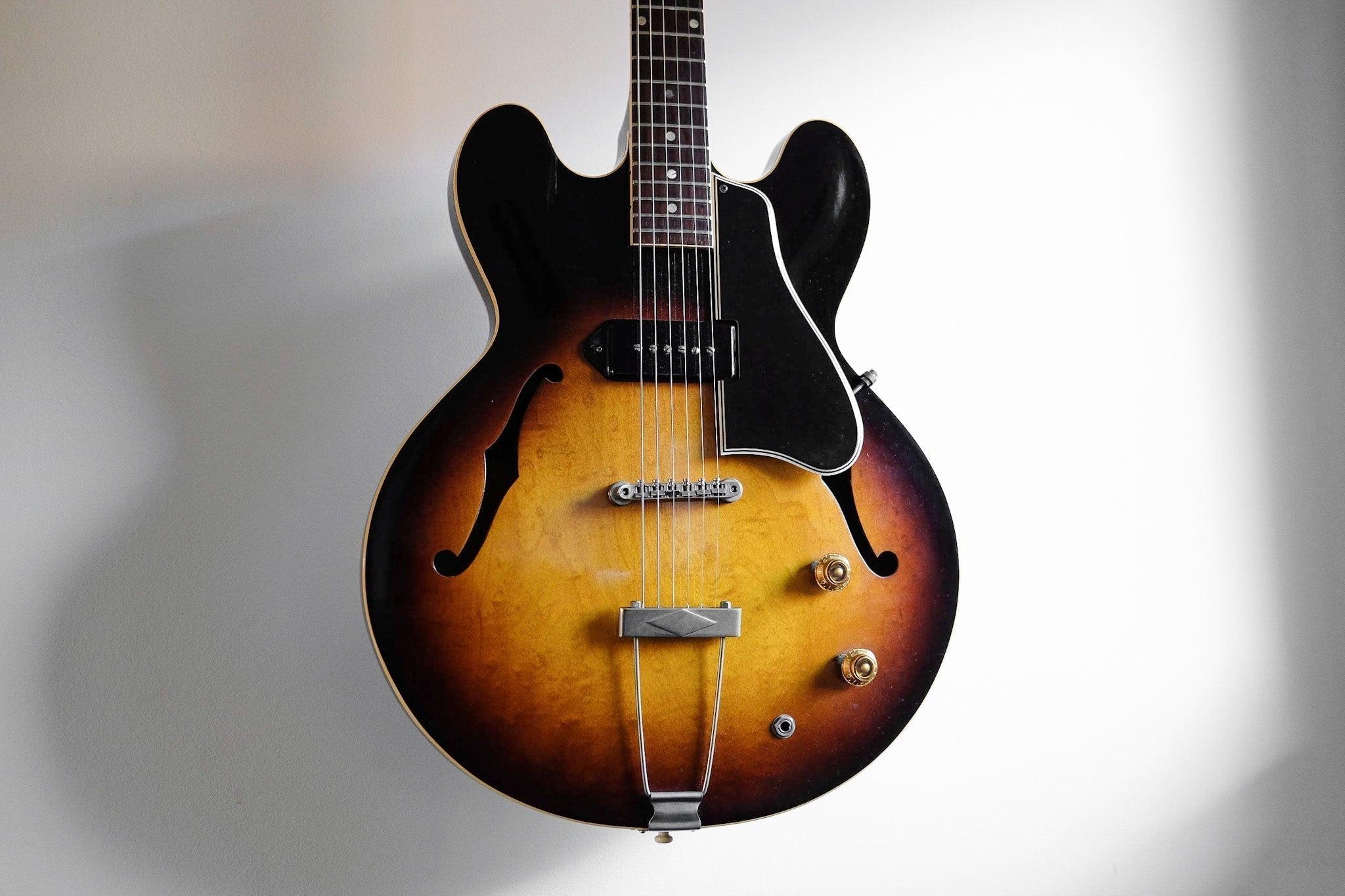When considering the purchase of a new guitar—whether it be your first or your 300th—there are a variety of factors that may seem obvious to weigh up (get it?). For many, aesthetic qualities like colour, contours, and overall design aligned with personal taste are the pre-eminent deciding factors. Others might be more swayed by the utilitarian function: the combination of hardware and electronics that best suit their musical needs.
However, we propose adding another critical factor to your decision-making process: weight. Specifically, why we love the advantages—both physical and tonal—that come with a well-made, lightweight instrument. The debate over light versus heavy guitars has been hotly contested for about as long as guitars have been around, and there’s no common consensus. So instead, we’ll lay out the facts, and let you decide.
The Factors That Decide Weight
The final weight of a guitar depends on a wide range of variables, often starting with its basic construction. We can begin by dividing guitars into two broad types: acoustic and electric.
For acoustic guitars, weight is largely influenced by tonewoods, bracing, and the age of the timber. While hardware still plays a role, it’s relatively minor. More seasoned, well-aged woods are lighter due to reduced moisture content, which can also subtly affect tonal characteristics.
In electric guitars, the picture gets a bit more complex. Construction style—whether solid body, hollowbody, or semi-hollow—has a major impact. Hollowbody guitars are usually lighter, thanks to their internal cavities, but that’s not a hard and fast rule. A fully-laminated archtop with a Bigsby can still weigh a tonne (trust us, our backs remember).
A Quick Note on Danelectros
Danelectro guitars, like the classic U2, are a great example of clever design keeping things light. Rather than using MDF as is sometimes mistakenly reported, they use Masonite (a type of hardboard) over a pine frame. That, plus their minimalist hardware, makes them featherweights.

Wood Density, Ageing and Seasoning
Tonewood choice plays a massive role in overall weight. Higher density woods like mahogany, commonly used for bodies and necks, are typically heavier than something like basswood or swamp ash. But it’s not as simple as comparing species. The age and seasoning of the wood, its grain structure, and moisture content all play a part.
Seasoned tonewoods have had moisture slowly removed over time, resulting in lighter weight and better resonance. Moisture increases mass, even if the cellular density is technically lower. So, two pieces of mahogany can feel wildly different depending on how they’ve been dried, cut, and stored.
Let’s Talk Les Pauls
The Gibson Les Paul is infamous for its weight, with some examples tipping the scales at over 6.3 kg (14 lbs). But there’s wide variation, even within the same model range. Some weigh as little as 3.6 kg (8 lbs), thanks to modern weight relief routing or unusually light tonewood. During the Norlin era of the 1970s, denser and less selective mahogany led to notoriously heavy examples.

Weight vs Tone
One of the most fiercely debated topics in guitar forums is whether weight actually affects tone. Some argue that a lighter guitar—especially one with more porous wood—resonates more freely and offers a richer acoustic presence when unplugged. In our experience, lightweight guitars with nitrocellulose finishes tend to have the most vibrant unplugged tone.
Others believe heavier guitars may provide more sustain and tonal focus due to increased mass. This idea gained traction in the Norlin-era Les Pauls and CBS-era Stratocasters. In the latter, some players also argued that the larger headstock design added sustain—though many luthiers would call that claim tenuous at best. It’s worth noting that changes in pickup output and amplification in those eras may have had more to do with tonal perception than weight alone.
What About Balance?
Beyond total weight, balance is a key factor for comfort. A guitar may not be particularly heavy, but if it suffers from neck dive, it’ll feel heavier in practice. Conversely, a well-balanced instrument can feel more manageable even if it’s on the heavier side. Strap options—like wide, padded leather or neoprene straps—can also make a big difference.
Weight Comparison Table
| Model | Typical Weight (kg) | Typical Weight (lbs) |
|---|---|---|
| Danelectro U2 | 2.7 – 3.2 | 6 – 7 |
| Fender Stratocaster | 3.2 – 4.1 | 7 – 9 |
| Fender Telecaster | 3.4 – 4.3 | 7.5 – 9.5 |
| Gibson Les Paul Standard | 4.1 – 5.5+ | 9 – 12+ |
| Gibson SG | 3.0 – 3.6 | 6.5 – 8 |
| Gretsch G5420T (Hollowbody) | 3.4 – 3.9 | 7.5 – 8.5 |
Conclusion
If you’ve made it this far, well done—you’ve survived one of the guitar world’s most contentious and borderline philosophical debates. At the end of the day, we always encourage players to follow their intuition. If you love the feel, sound, and look of a Norlin-era anchor of a Les Paul, go for it. If you crave the airy resonance of a thinline and don’t mind sacrificing some sustain, do it.
We just really like light guitars here. And if you’re someone who thinks a guitar doesn’t count unless it gives you back pain… we shudder to think of your physio bills.


0 comments